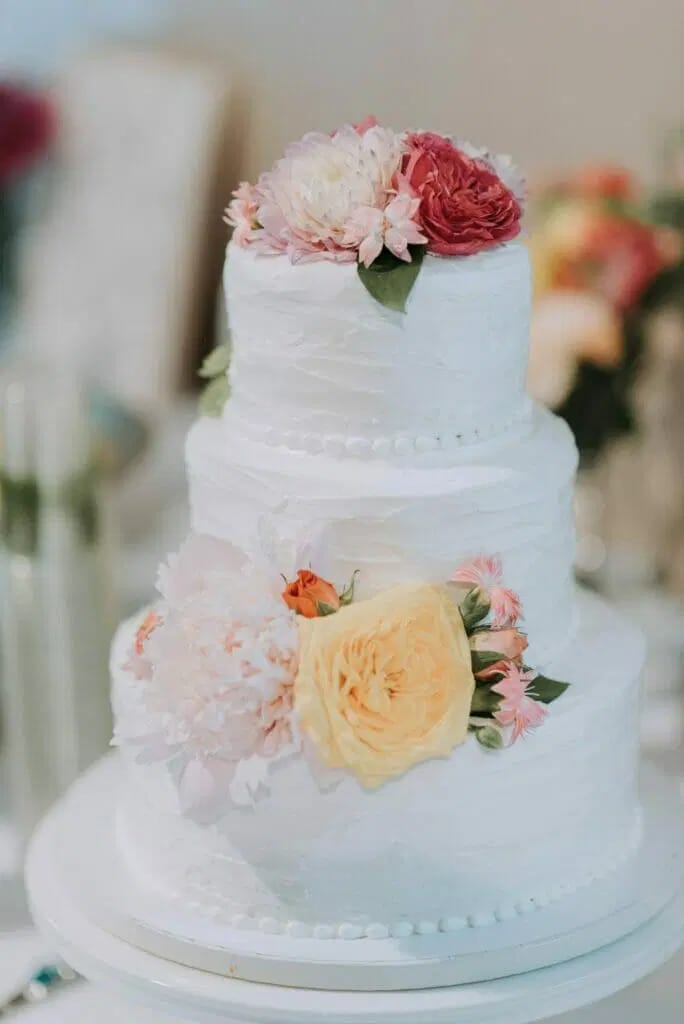As an Amazon Associate, I earn from qualifying purchases. In addition, I participate in several other affiliate programs that allow me to earn while I recommend products I love.
Fondant, with its smooth and pliable texture, has become a beloved medium for cake decorating and crafting.
Whether you’re creating intricate cake decorations, adorable fondant toppers, or delicate edible figurines, properly drying fondant is the key to achieving stunning and long-lasting results and learning how to harden fondant is the key to success.
In this comprehensive guide, we’ll take you through the step-by-step process of drying fondant to perfection, unlocking a world of creative possibilities for your baking and crafting projects.

Understanding Fondant Drying
Want to know how to dry out fondant?
Fondant drying is a crucial step in cake decorating and crafting that allows you to shape and mold fondant into intricate designs and maintain their form.
Fondant, made primarily of sugar and water, can initially be soft and pliable, making it easy to work with for various cake decorations and crafting projects.
However, this softness also means that it can lose its shape or sag if not properly dried.
The purpose of fondant drying is twofold: first, to remove excess moisture from the fondant, which gradually firms up the material, making it sturdier and more capable of holding its shape.
Second, drying fondant helps preserve the intricate details and designs you’ve sculpted, allowing your creations to maintain their integrity over time.
By the end of the drying process, your fondant pieces will be firm to the touch, making them easier to handle, transport, and adorn your baked treats and crafts.
How Long Does Fondant Take to Dry?
The drying time of fondant largely depends on several factors, such as the thickness of the fondant layer, ambient humidity, and the size of the decorated piece.
In general, small fondant decorations, like flowers or figurines, can dry within a few hours to overnight, while larger, more intricate designs may take 24 to 48 hours or even longer.

Types of Fondant Projects That Require Drying
Let’s learn how to dry fondant fast!
Drying fondant is essential for a variety of cake decorating and crafting projects.
Some of the most common applications include:
Cake Decorations
Fondant is often used to create beautiful and intricate decorations on cakes, such as delicate flowers, lace patterns, and cutouts.
By drying the fondant decorations, you ensure they retain their shape and won’t wilt or lose their form when placed on the cake.
Fondant Toppers and Figurines
Adorable fondant toppers and figurines are a charming addition to cupcakes and celebration cakes.
By drying the fondant before assembling the toppers, you prevent them from losing their shape during the drying process.
Edible Cake Decorations
Fondant is a versatile material for crafting edible decorations, such as letters, numbers, and intricate designs.
Properly drying these decorations ensures they remain intact and ready to adorn your special occasion cakes.
Tips for Preparing Fondant for Drying: how to harden fondant quickly
Before you begin drying fondant, ensure it’s well-prepared for the process:
Knead the Fondant
Before shaping and drying, knead the fondant until it becomes smooth and pliable.
This step helps create a uniform texture throughout the fondant, making it easier to work with during shaping.
Add Tylose Powder or Gum Tragacanth
For quicker drying and added stability, you can incorporate a small amount of tylose powder or gum tragacanth into the fondant.
These additives enhance the fondant’s drying properties, making it sturdier and more suitable for complex designs and 3D shapes.
Color Fondant Before Shaping
If you need colored fondant for your project, it’s best to add food coloring or gel color while kneading the fondant before shaping and drying.
This ensures that the color is evenly distributed throughout the fondant, giving you a consistent hue for your designs.
Drying Fondant Flat
For flat fondant pieces, such as cutouts and decorations, follow these steps:
Prepare a Clean Surface
Choose a clean and dry surface for drying the fondant pieces.
A silicone mat or a non-stick surface works well, preventing the fondant from sticking during the drying process.
Roll Out Fondant Evenly
Using a rolling pin, roll the fondant out evenly and to the desired thickness.
For a uniform result, use rolling pin guide rings or dowels as a guide.
Drying Techniques
For flat fondant pieces, such as cutouts and detailed decorations, simply place them on the prepared surface and allow them to dry completely.
You can use a dehydrator on a low setting or place the fondant pieces in a cool, dry area with good air circulation to expedite the drying process.
Drying Fondant in 3D Shapes
For 3D fondant shapes and figurines, such as animals, people, and objects, follow these guidelines:
Create Fondant Figurines
Carefully mold and shape the fondant into your desired 3D shapes or figurines.
Use reference images or templates to guide you in creating lifelike designs.
Support During Drying
Assemble and support the fondant pieces during drying to maintain their structure and prevent deformation.
Toothpicks, cocktail sticks, or small pieces of dowel can be used to secure parts of the figurine together.
Proper Drying Time
Depending on the size and complexity of the design, fondant figurines may take several hours or even a couple of days to dry completely.
Be patient and allow ample time for the pieces to firm up before handling or attaching them to your cakes.
Using Fondant Molds for Drying
Fondant molds offer an easy and efficient way to create intricate shapes and patterns for your cake decorations and crafts.
Here’s how to use them:
Prepare Fondant Molds
Ensure the fondant molds are clean and dry before use.
Lightly dust them with cornstarch or powdered sugar to prevent sticking.
Press Fondant into Molds
Gently press the fondant into the mold, ensuring all the details are captured.
Use a small rolling pin or your fingers to press the fondant evenly into the mold.
Releasing Fondant from Molds
To remove the fondant from the molds without distortion, carefully flex the mold or tap it gently on a flat surface until the fondant releases.
If you encounter any stubborn areas, use a small modeling tool or a toothpick to coax the fondant out of the mold.
Troubleshooting Fondant Drying Issues
While drying fondant is generally a straightforward process, you may encounter some common issues.
Here are some troubleshooting tips:
Fondant Cracking
If the fondant cracks during drying, it may have dried too quickly.
To prevent this, keep the drying area cool and avoid exposing the fondant to direct heat or sunlight.
Consider placing the fondant in a room with consistent temperature and humidity levels.
Fondant Sticking
Fondant can stick to surfaces, especially in humid conditions.
To prevent sticking, use cornstarch or powdered sugar to dust your work surface and rolling pin.
You can also work on a non-stick silicone mat to ensure easy release of the fondant.
Storing Dried Fondant Pieces
Once your fondant pieces are dried and beautifully decorated, you may want to store them for future use:
Short-Term Storage
For short-term storage, place dried fondant pieces in an airtight container at room temperature.
This will protect them from dust and humidity for a few days.
Long-Term Storage
For longer shelf life, store dried fondant pieces in an airtight container in a cool, dry place away from direct sunlight.
Avoid placing them in the refrigerator, as the humidity can affect the fondant’s texture and decorations.
Alternatively, if you have excess fondant pieces that you don’t plan to use anytime soon, you can freeze them for up to several months.
To freeze fondant, wrap the pieces tightly in plastic wrap and place them in an airtight container or resealable freezer bag.
Before using the frozen fondant, allow it to thaw at room temperature, unwrapping it only when it reaches room temperature to avoid condensation.
Want to learn more about fondant? Check out our other guides!
